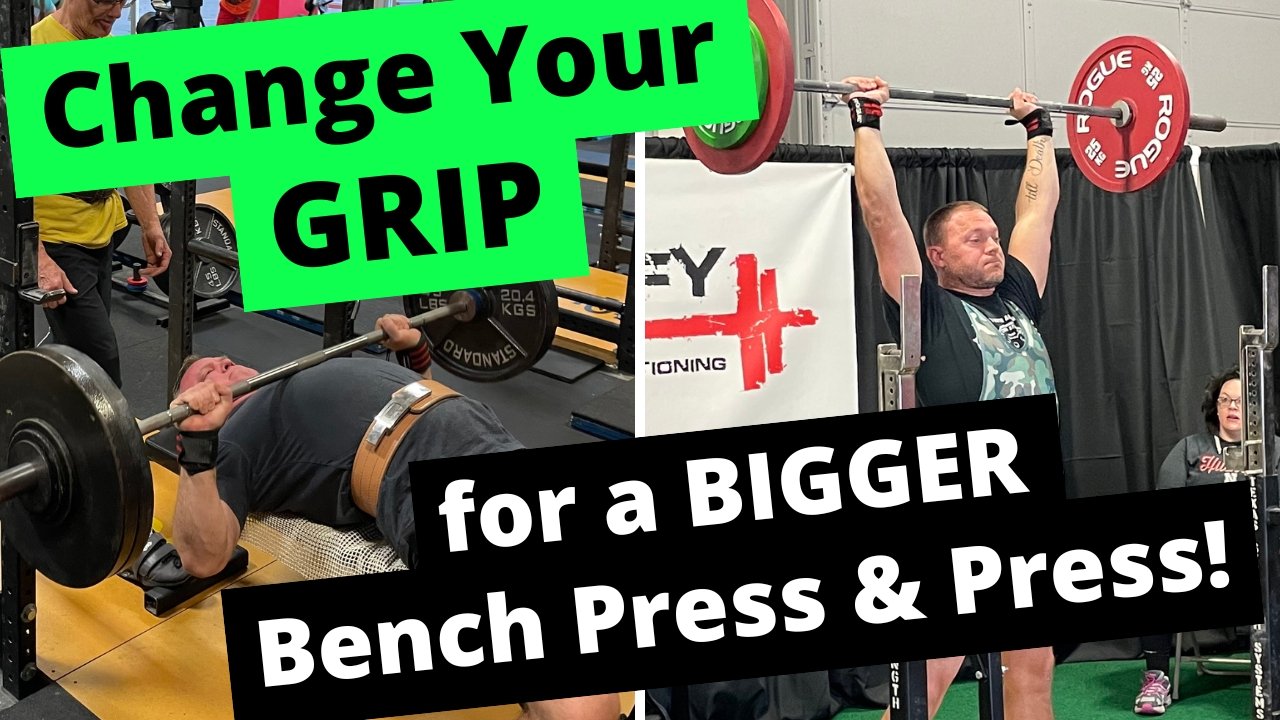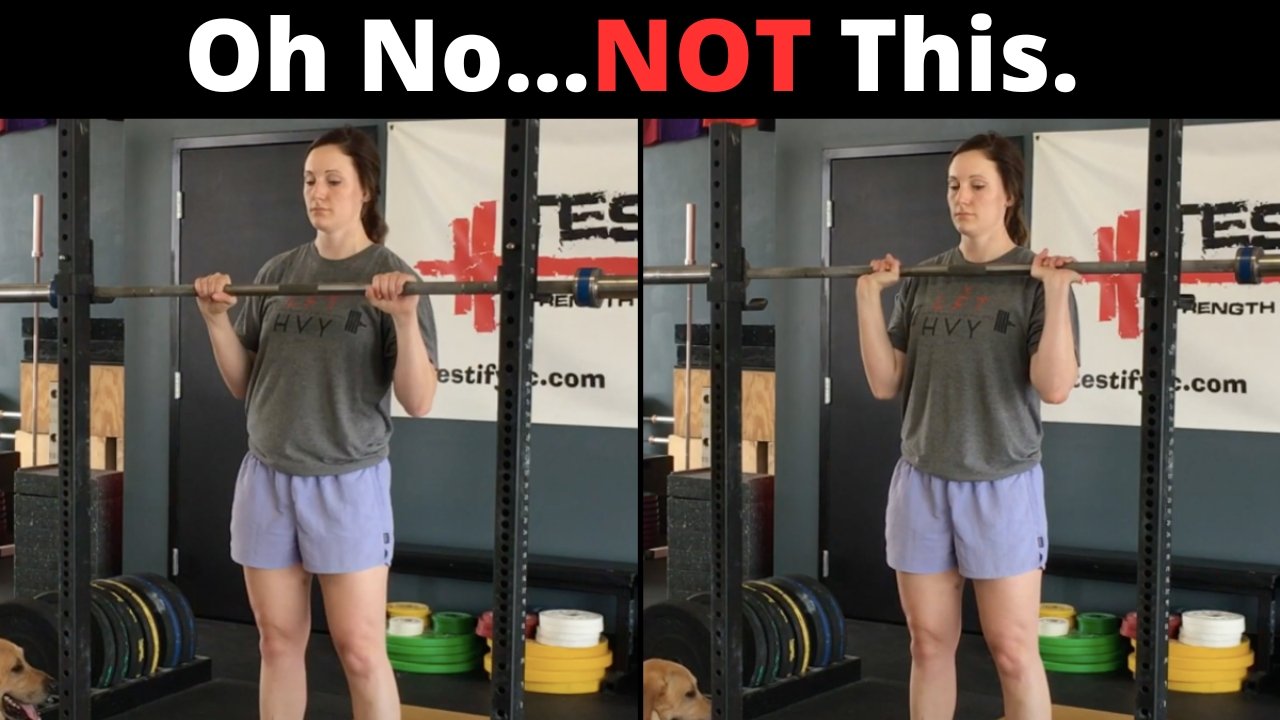The FWYS Principle: If You Don't Change This, Your Press Will ALWAYS Suffer
/(A Blast from the Past article originally posted on 12/24/21)
A common problem with new lifters and the press is achieving the correct start position for each rep - specifically, achieving the correct start position for every rep after your first rep.
After all, the correct start position for the first rep should be accomplished by correctly gripping and unracking the bar in the first place (watch the included video that covers this), but today, we're specifically talking about getting the correct start position for the rest of your set (e.g., your 2nd rep all the way to the end of the set).
Figure 1
The key is to finish the press where you start the press, so make sure that you start with elbows slightly in front of the bar, squeezing the bar tightly and with relatively straight wrists (technically, they will be slightly in extension) as you see in Figure 1. Then, after locking out the rep overhead, simply remind yourself to lower it back to this exact same position.
Figure 2: Don’t be like this fool.
Specifically, we do not want to lower the bar back to the position you see in Figure 2, where the lifter has his elbows behind the bar and wrists in severe extension. It’s a weaker position - it’s tough to support a heavy weight in this position, and now you’ve got to spend time and energy getting back to the correct start position.
Even worse, if you don’t spend that time and energy getting back to the correct position, it’s harder to press the bar overhead from this weak position. This poor position often contributes to a forward bar path on the next rep, which can easily be the difference between a successful rep and a missed rep at challenging weights.
Figure 3
Again, the key is to finish where you start (FWYS).
If you still find that lowering the bar consistently to the correct start position is difficult, try this mental picture (Figure 3) - imagine that you are standing very close to a wall with the bar locked out overhead. While lowering the bar, picture yourself dragging your elbows down the wall while keeping your fists (and therefore the bar) away from the wall.
Remember to aim for your nose with the bar on the way down as well as on the way up. This “elbows-dragging-down-the-wall” image is a slightly exaggerated picture of what we actually want to happen (watch the included video to see this in action), but a number of our members have found this very useful.
We hope this helps you get stronger and live better!
(Some links may be affiliate links. As an Amazon Associate, Testify earns from qualifying purchases.)















